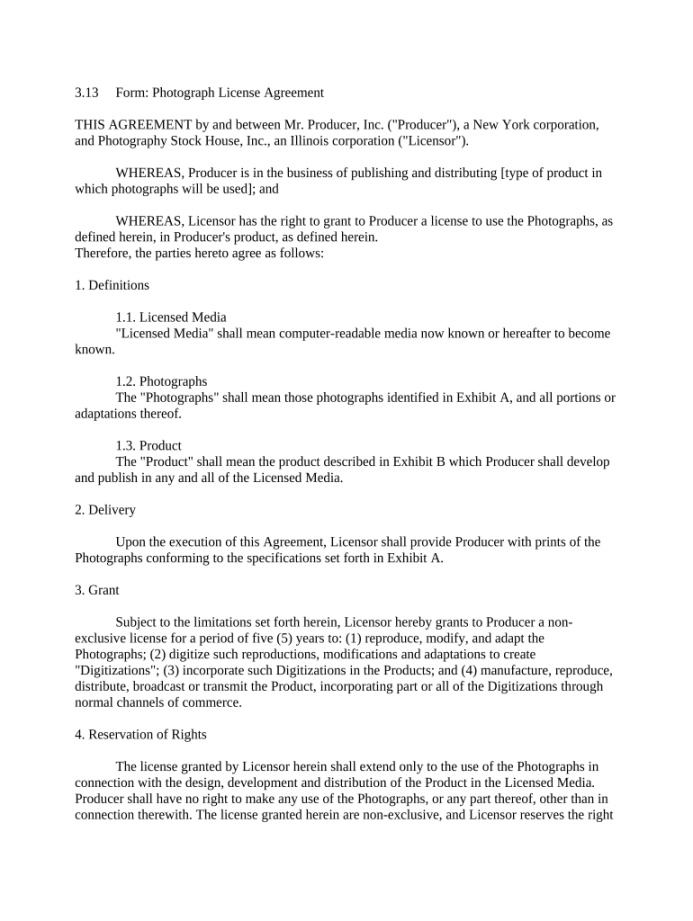Understanding the Core Elements
A photography license agreement is a legal document that outlines the specific rights and permissions granted to a client for the use of photographs. It is crucial to have a well-structured and comprehensive template to protect your interests and ensure clarity in your business dealings.

Key Components of a Photography License Agreement
1. Parties Involved: Clearly identify the parties involved in the agreement. This includes the photographer (you) and the client.
2. Scope of Work: Define the specific photographs covered by the agreement, including the date, location, and subject matter.
3. Grant of Rights: Specify the type of license granted to the client. This could be a non-exclusive license (allowing both you and the client to use the photographs) or an exclusive license (granting the client sole ownership rights).
4. Permitted Uses: Outline the specific purposes for which the client can use the photographs. This might include print, digital, or commercial use.
5. Restrictions: Indicate any limitations or restrictions on the client’s use of the photographs. For example, you might prohibit alterations, modifications, or derivative works.
6. Term and Renewal: Specify the duration of the license and any provisions for renewal.
7. Fees and Payments: Clearly state the payment terms, including the amount due, payment schedule, and any applicable taxes.
8. Ownership Rights: Confirm that you retain ownership of the photographs, even after granting a license.
9. Indemnification: Include a clause that indemnifies you against any claims or liabilities arising from the client’s use of the photographs.
10. Governing Law and Jurisdiction: Specify the governing law and jurisdiction for resolving any disputes.
11. Entire Agreement: State that the agreement constitutes the entire understanding between the parties and supersedes any prior or contemporaneous communications.
Design Considerations for a Professional Template
To convey professionalism and trust, consider the following design elements:
Clear and Concise Language: Use plain language that is easy for both you and the client to understand. Avoid legal jargon that may be confusing.
Additional Tips for Creating a Strong Template
Consult with an Attorney: While you can create a basic template yourself, it is advisable to consult with an attorney to ensure that it complies with all relevant laws and regulations.
By following these guidelines, you can create a professional photography license agreement template that effectively protects your rights and establishes a clear understanding with your clients.


